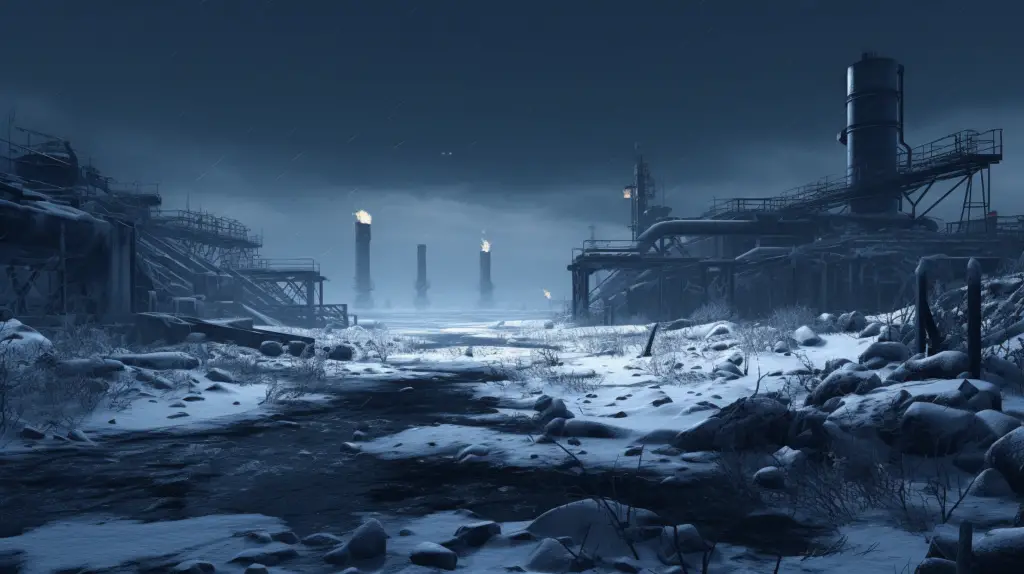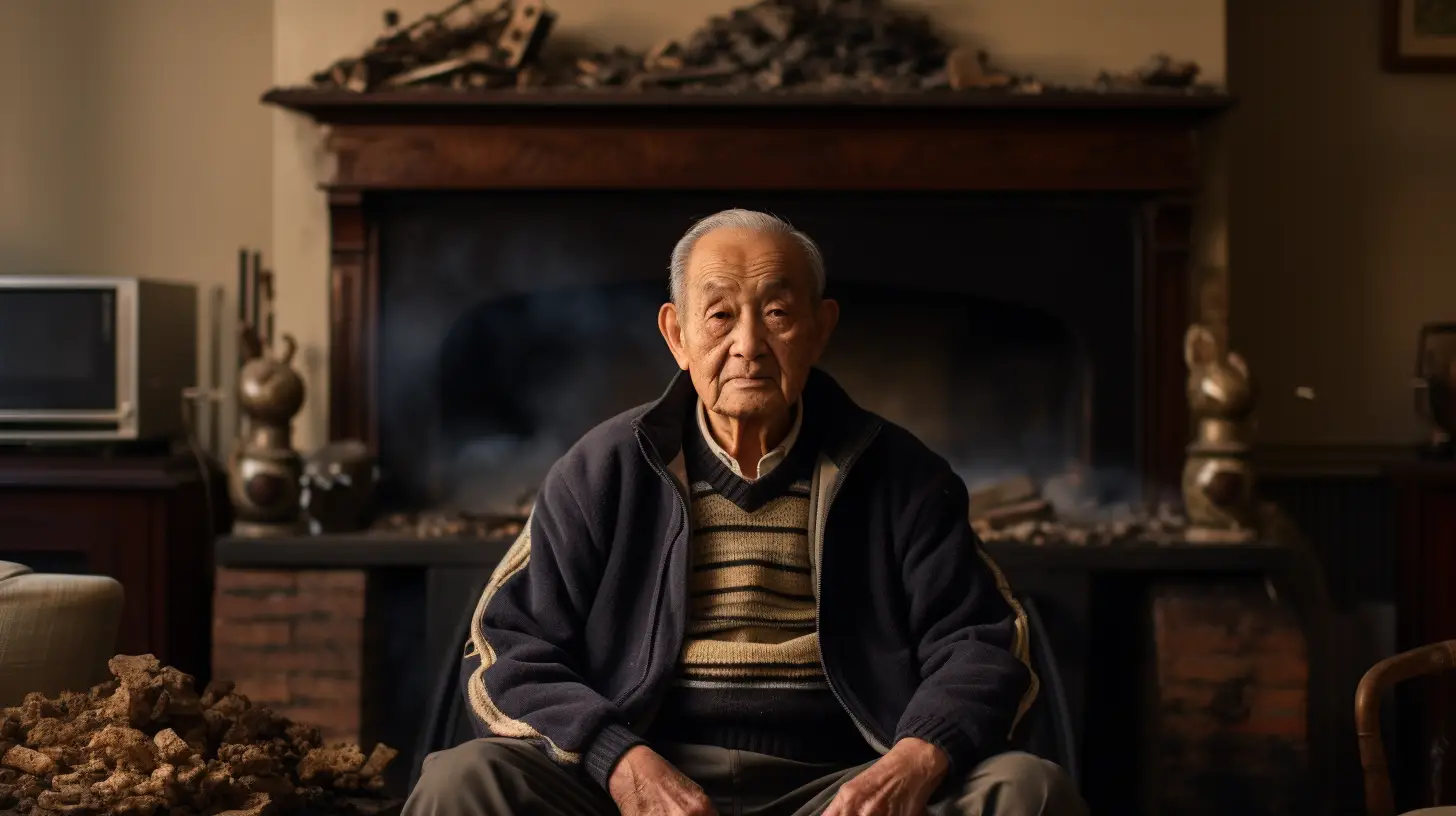The term ‘nuclear winter’ evokes images of a post-apocalyptic world, where the skies are shrouded in perpetual darkness due to the aftermath of a nuclear war. It’s a chilling scenario, yet fascinating in the sheer magnitude of its implications for the planet. This theory of nuclear winter is more than a sci-fi horror story; it is an extensively studied topic in climatology and political science, spawning myriad research studies and simulations since its conception in the 1980s.

This article aims to take you on an intriguing journey through 25 interesting facts about the nuclear winter theory. It might make you think twice about the potential cataclysmic consequences of a nuclear conflict.
- The term ‘nuclear winter’ was first coined by American scientists Richard P. Turco, Owen Toon, Thomas Ackerman, James Pollack, and Carl Sagan, who published a seminal paper in 1983 titled “Nuclear Winter: Global Consequences of Multiple Nuclear Explosions.”
- The idea behind nuclear winter is that the intense heat from nuclear explosions would cause widespread fires that could inject massive amounts of smoke and soot into the Earth’s stratosphere, blocking sunlight and causing global cooling.
- These atmospheric changes would last for months, or even years, resulting in a significant drop in global temperatures – thus, the concept of a ‘nuclear winter.’
- In the initial years of nuclear winter research, the scientific community was divided. Some critics argued that the effects would not be as catastrophic as initially thought, while proponents stressed the potentially devastating consequences.
- A 1990 report by the United Nations Scientific Committee on the Effects of Atomic Radiation affirmed that nuclear winter effects were a realistic threat in the event of a large-scale nuclear war.
- The theory’s development was greatly influenced by the discovery of the ‘nuclear twilight’ effect, which was observed after large volcanic eruptions such as the 1815 Mount Tambora eruption.
- The 1986 Chernobyl disaster and the 2011 Fukushima disaster allowed scientists to gather real-world data on the effects of nuclear fallout, refining the nuclear winter models.
- A full-scale nuclear war involving thousands of detonations could cause global average surface temperatures to drop by more than 20 degrees Celsius in the first year.
- Besides the cooling, the reduction in sunlight could affect photosynthesis, leading to crop failure and widespread famine.
- In a nuclear winter scenario, the initial deaths from nuclear blasts and radiation would likely be eclipsed by the long-term effects of cold, famine, and disease.
READ MORE: 25 Interesting Facts About “Hibakusha”: Survivors of the Atomic Bombings - Carl Sagan, one of the theory’s founders, used the concept of nuclear winter to advocate for nuclear disarmament throughout the 1980s and early 1990s.
- Some studies suggest that even a ‘small’ nuclear war, involving around 100 Hiroshima-sized bombs, could lead to significant global cooling.
- The ‘nuclear autumn’ concept emerged as a less extreme version of nuclear winter, predicting less severe but still catastrophic climatic changes following a nuclear war.
- The nuclear winter theory played a crucial role in Cold War diplomacy and arms control negotiations, influencing the decisions of both the United States and the Soviet Union.
- Despite the end of the Cold War, the theory remains relevant due to the continued existence of large nuclear arsenals and the proliferation of nuclear weapons to new countries.
- The theory has also been applied to asteroid impacts and massive volcanic eruptions, both of which could produce similar effects on global climate.
- Modern supercomputer simulations have confirmed the potential severity of a nuclear winter and have allowed scientists to generate more detailed and accurate predictions.
- The nuclear winter theory has been referenced in popular culture, including films, books, and video games, often used as a backdrop for post-apocalyptic narratives.
- Some researchers argue that nuclear winter could cause an “ozone hole” effect, further damaging the environment by allowing increased UV radiation to reach the Earth’s surface.
- The longevity of soot in the stratosphere, an essential factor in nuclear winter, is currently a topic of active research. It is believed that it may last up to a decade, exacerbating the cooling effect.
READ MORE: 50 Interesting Facts About the Atomic Bomb You Need to Know and Understand - The severity of a nuclear winter depends on several factors, including the number and size of nuclear detonations, the locations targeted, the time of year, and existing weather conditions.
- Recent studies suggest that nuclear winter could even cause abrupt and severe extinction events, similar to those seen in Earth’s past.
- Scientists have used the nuclear winter scenario to highlight the continued need for nuclear disarmament and the dangers of nuclear proliferation.
- The nuclear winter theory has provided a stark example of how human actions could unintentionally cause drastic, global-scale changes to the environment.
- Despite the grim outlook, the theory of nuclear winter has served an essential role in promoting peace and understanding the potential environmental impacts of human conflict.
READ MORE: 50 facts you need to know and understand about the atomic bomb dropped on Hiroshima
The theory of nuclear winter stands as a stark reminder of the potential self-destruction humanity is capable of inflicting upon itself. It goes beyond the immediate catastrophic impacts of nuclear warfare to predict devastating global consequences that could last for years or decades. While a sobering prospect, it has contributed to critical dialogues surrounding disarmament, environmental preservation, and global cooperation – discussions that remain as relevant today as they were in the height of the Cold War.


